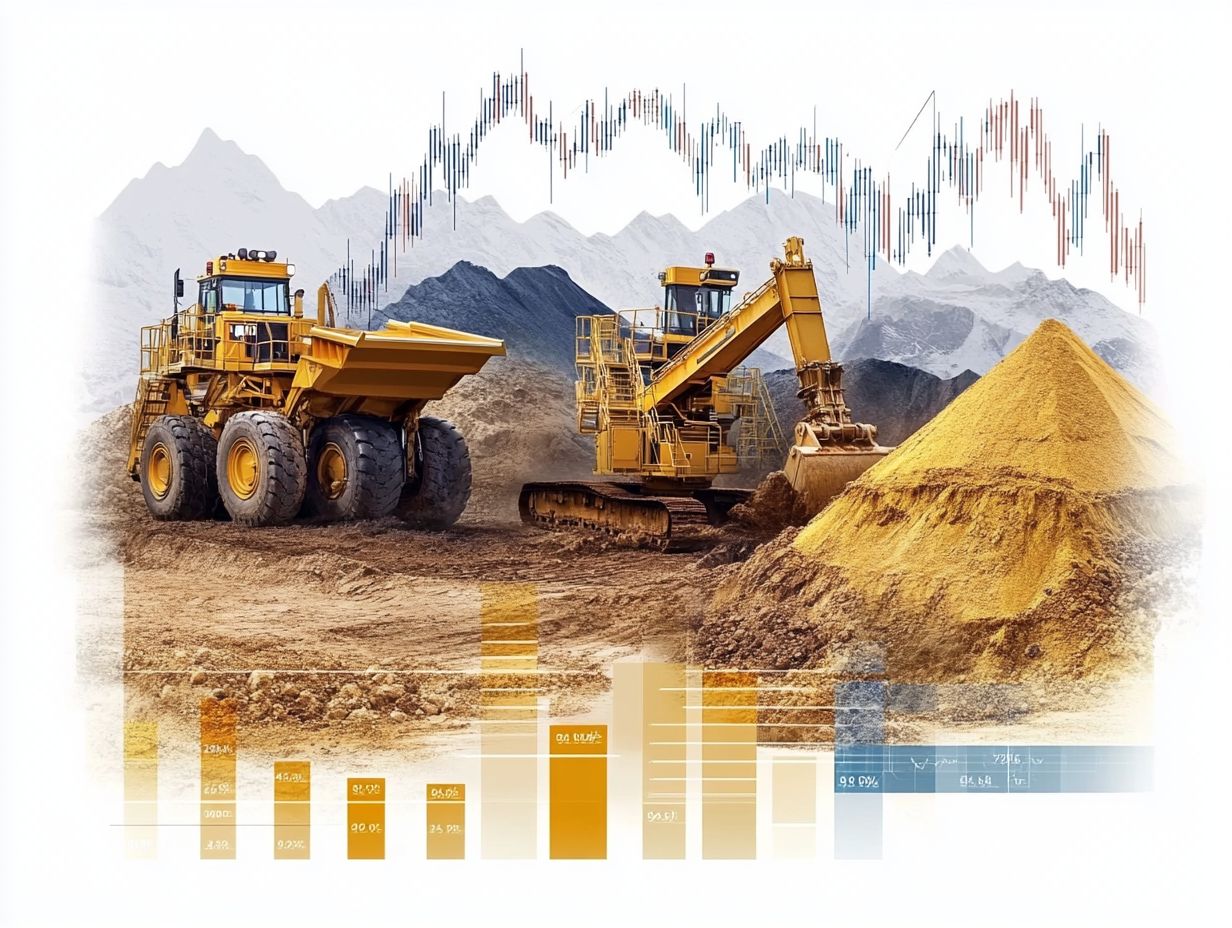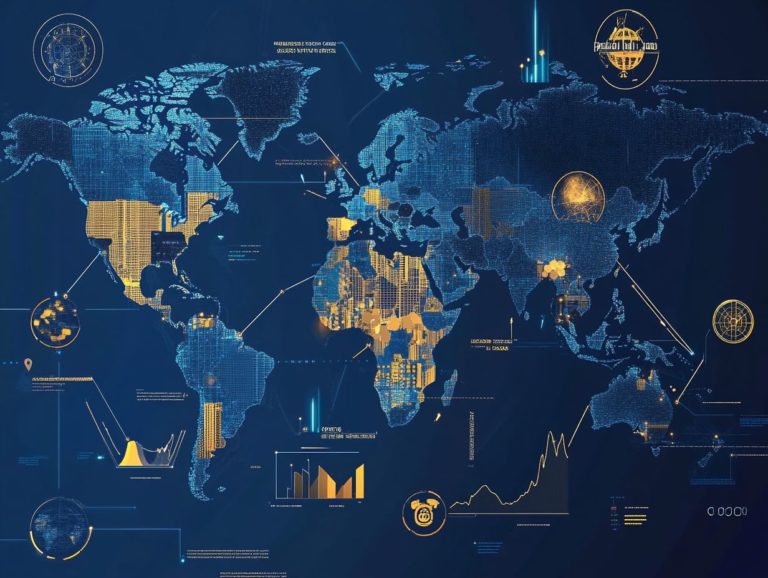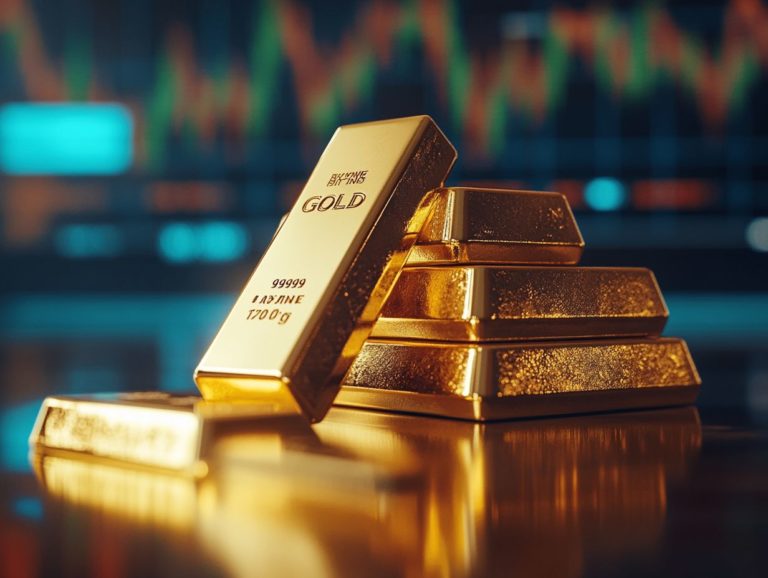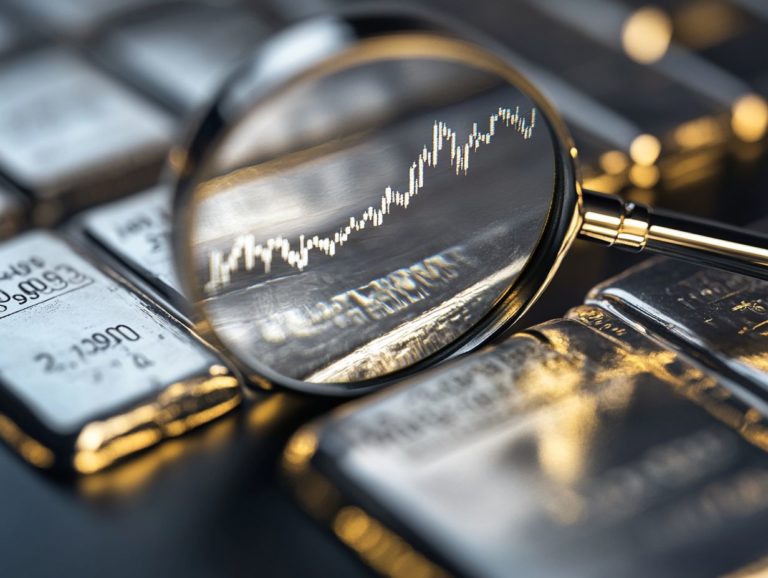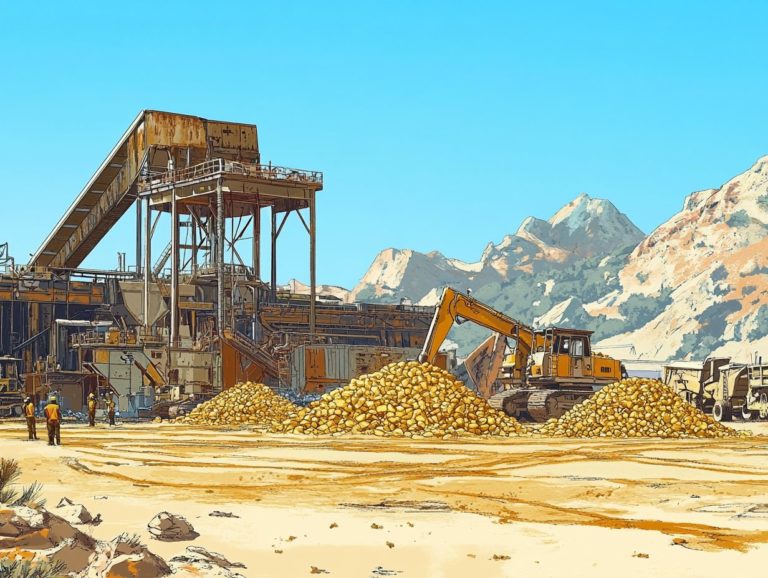Understanding Gold Mining Costs and Prices
Gold mining is a complex industry that has profoundly influenced economies and cultures throughout history. Understanding the costs of extracting this precious metal is essential for investors and stakeholders.
This article delves into the historical significance of gold mining, the many factors that shape mining costs, and the complexities of gold pricing.
You will discover strategies for cost reduction while also examining the broader economic and environmental impacts these costs impose on the industry. Dive in as you uncover the vital elements of gold mining and its dynamic market landscape.
Contents
Key Takeaways:
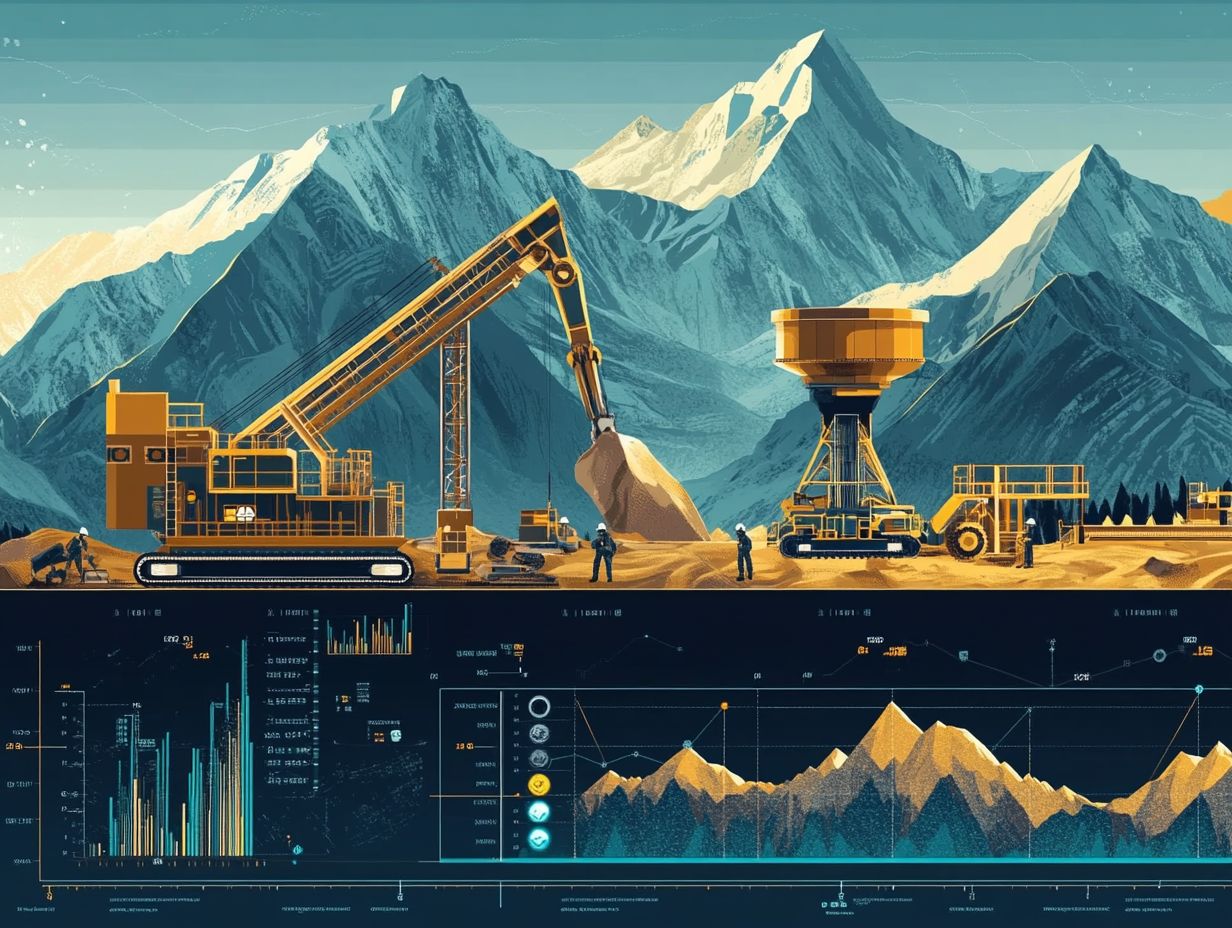
- Gold mining has a long history and is a crucial industry for economies around the world.
- Labor, equipment, and other expenses greatly impact gold mining costs, making it crucial to carefully manage and reduce these costs.
- Factors such as supply and demand, inflation, and geopolitical events can all influence gold prices, making it important for miners to stay informed and adaptable.
Overview of Gold Mining
Gold mining boasts a profound historical significance that spans thousands of years and continues to be a cornerstone of the global economy. Each year, vast resources are extracted.
This reflects an industry that has evolved through various phases, influenced by technological advancements and shifts in demand especially during economic crises and fluctuations in commodity prices.
Today, miners across the globe, from South Africa to Australia, are committed to sustainable extraction practices. However, they face challenges such as rising production costs and the urgent need for efficient exploration methods to meet the ever-growing demand for this precious metal.
History and Importance of Gold Mining
The history of gold mining spans several centuries, underscoring its significance as a key engine of economic growth and stability, particularly during pivotal moments like the 1970s economic crisis and the boom years of 2012 and 2022. This precious metal has served not only as a symbol of wealth but also as a safe haven during turbulent times, wielding considerable influence over global markets and shaping economies.
Take, for instance, the discovery of vast gold reserves in California in 1848, which ignited the Gold Rush and attracted countless prospectors, forever altering the American landscape. Technological advancements in mining techniques, such as cyanide leaching a process that uses cyanide to extract gold from ore have consistently redefined production levels.
Fluctuations in demand, driven by jewelry markets, central bank policies, and geopolitical tensions, have continually highlighted gold s enduring allure and its vital role in preserving financial stability.
Factors Affecting Gold Mining Costs
The costs tied to gold mining are shaped by a multitude of factors. Labor expenses, equipment prices, inflation rates, and the broader economic climate all play crucial roles.
These factors significantly impact production efficiency. They also affect profitability for miners worldwide.
Labor, Equipment, and Other Expenses
Labor and equipment represent some of the most significant expenses in gold mining, and you may find yourself grappling with rising costs as demand for energy and materials for extraction and processing escalates.
As these crucial components continue to climb, you must adapt and find smarter ways to manage your resources. Fluctuations in energy pricing, influenced by geopolitical factors and changes in supply and demand, only add to the complexity of your budgeting efforts. Your increasing reliance on advanced technologies not only affects your immediate capital outflow but also informs your long-term operational strategies.
In this evolving landscape, it s crucial to stay informed about market trends and optimize your spending to maintain profitability in a competitive environment.
Understanding Gold Prices
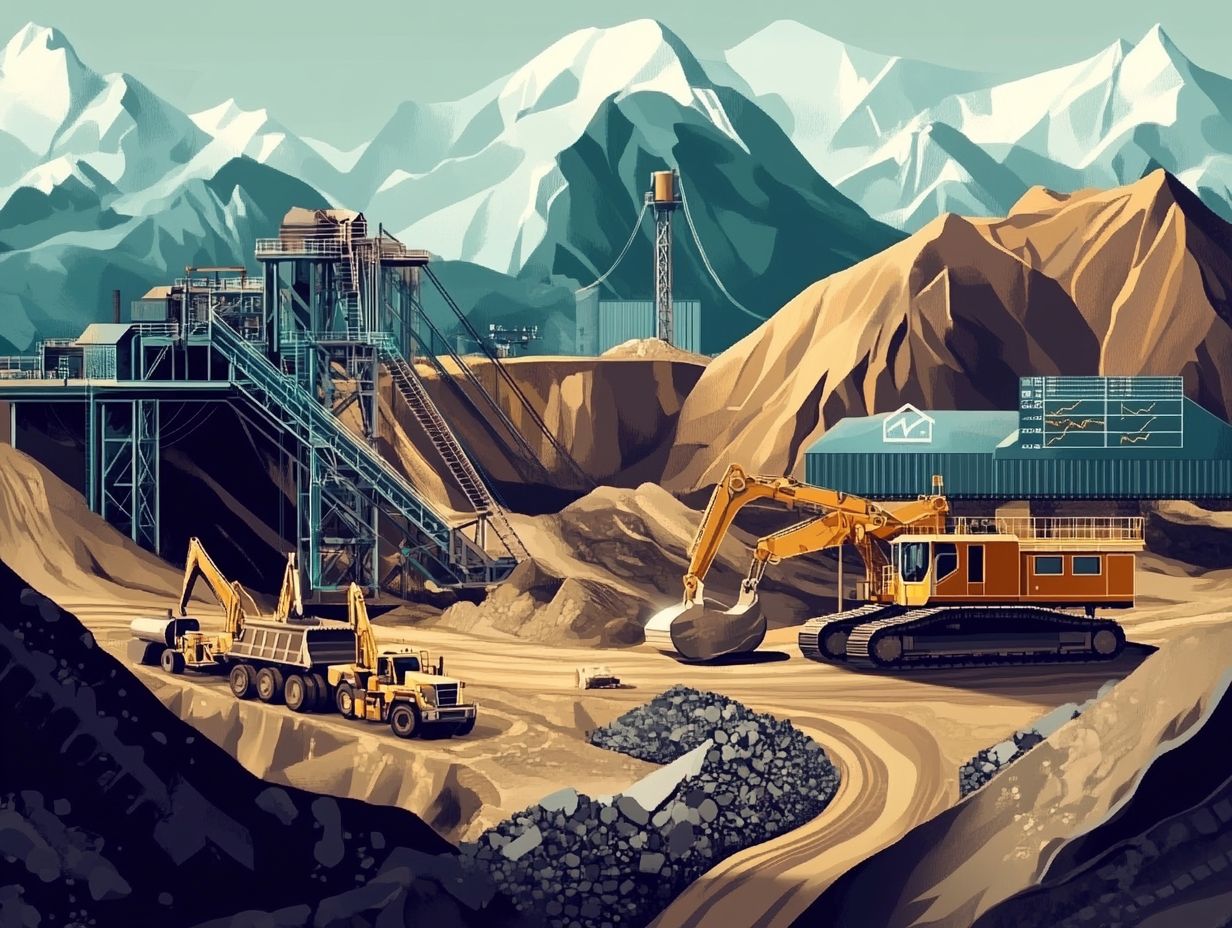
Understanding gold prices requires you to navigate a complex interplay of factors that influence its market value. This makes gold not only a significant investment commodity but also a reliable hedge against economic uncertainties.
By looking into these dynamics, you position yourself to make informed decisions that can enhance your financial strategy.
Factors Influencing Gold Prices
Several factors shape gold prices, including:
- Market demand
- Inflation rates
- Economic landscape
This positioning makes it a vital asset for your investment and financial security.
Throughout history, investors have often flocked to gold during uncertain times, seeking refuge from unpredictable stock markets and volatile currencies.
Economic indicators, like interest rates and employment data, significantly influence sentiment surrounding this precious metal. Geopolitical tensions can trigger sudden fluctuations, as traders swiftly respond to news from conflict zones or economic sanctions that threaten currency stability.
By understanding these dynamics, you can gain valuable insights into the intricate behavior of gold, equipping yourself to diversify your portfolio and effectively hedge against potential economic downturns.
Calculating Gold Mining Costs
To accurately calculate gold mining costs, you must develop a thorough understanding of various methodologies. One crucial approach is the All-In Sustaining Cost (AISC) framework (a comprehensive measure of mining costs), which encompasses the complete spectrum of production costs and financial metrics tied to mining operations.
This comprehensive insight allows you to grasp the true economic landscape of your mining endeavors.
Methods for Calculating Costs
There are various methods for calculating gold mining costs, with AISC standing out as one of the most widely embraced. It offers a comprehensive overview of all expenses tied to production.
When you compare AISC with other methods like Cash Cost and Total Cost, you gain valuable insights into your financial position within the industry. While Cash Cost zeroes in on direct operational expenses, AISC broadens the scope to include additional factors like sustaining capital expenditures and environmental costs. This gives you a clearer view of profitability.
This distinction is vital for you as an investor seeking to assess the long-term viability of a mining operation. Companies often use AISC to evaluate the impact of fluctuating gold prices, while Cash Cost can serve as a barometer for operational efficiency. By integrating these methodologies, mining firms can enhance strategic planning and optimize resource allocation.
Strategies for Reducing Gold Mining Costs
Act now to reduce gold mining costs and secure your profitability! Miners are embracing efficiency and cost-saving techniques like never before, all while promoting sustainable recovery practices and effective resource management.
Efficiency and Cost-Saving Techniques
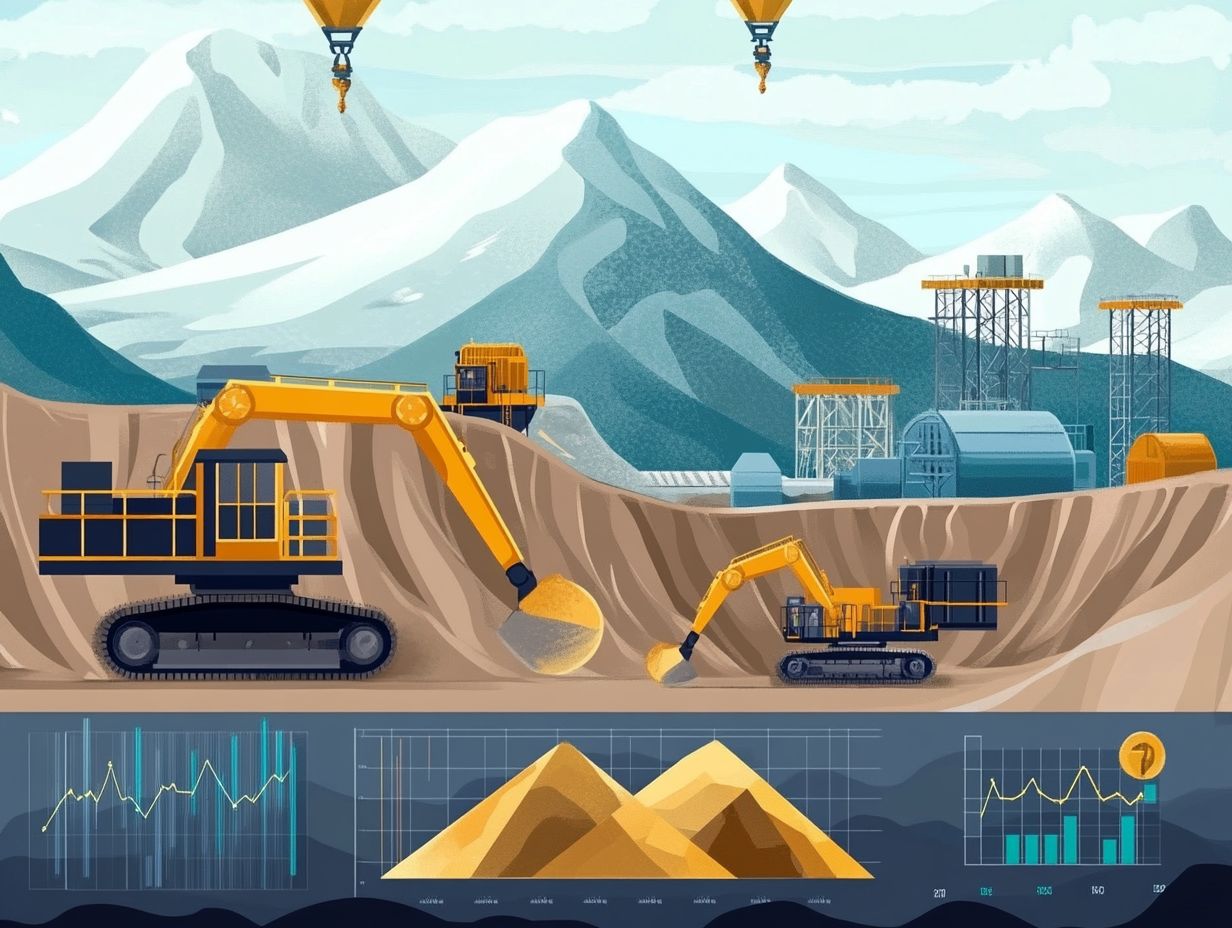
Efficiency and cost-saving techniques in gold mining encompass a range of innovations in extraction methods, enhanced resource recovery, and sustainable practices that significantly reduce waste and environmental impact.
Modern miners are increasingly adopting advanced technologies like cyanide-free leaching and bioleaching techniques. These methods not only extract precious metals more effectively but also minimize harmful emissions, leading to a noteworthy reduction in the carbon footprint typically associated with traditional mining practices.
The incorporation of automated machinery and real-time data analytics further streamlines operations, allowing you to leverage human resources more strategically.
Your commitment to sustainability in this sector isn’t just a passing trend; it’s becoming central to your overall strategy. This approach aligns profitability with ecological responsibility, creating a lasting impact on both the industry and the communities involved.
Impact of Gold Mining Costs on the Industry
The impact of gold mining costs on the industry is profound. It shapes not only economic performance but also environmental sustainability.
Fluctuating costs dictate how you run your operations and can significantly influence your market competitiveness.
Economic and Environmental Effects
Economic and environmental impacts of gold mining costs are closely connected. Rising costs often lead to increased scrutiny of mining practices and their environmental impact.
As you navigate this complex landscape, finding a delicate balance between profitability and sustainable practices is essential. Embracing advanced technologies for efficient resource extraction or harnessing renewable energy can dramatically cut costs and reduce carbon emissions!
Your commitment to responsible mining methods cultivates stronger relationships with local communities. It also bolsters your company s reputation, potentially attracting increased investment. By prioritizing ecological sustainability, you can not only address regulatory pressures but also pave the way for a more resilient business model in today s ever-evolving market.
Frequently Asked Questions
What are gold mining costs?
Gold mining costs are the expenses involved in extracting gold, like labor, machines, and permits.
How are gold mining costs calculated?
Gold mining costs are typically calculated on a per ounce basis. This is done by dividing the total cost of production by the total number of ounces produced.
What factors affect gold mining costs?
Gold mining costs can be influenced by various factors, such as the price of labor, fuel prices, equipment availability, and regulatory requirements. The location and type of gold deposit also impact mining costs.
Why are gold mining costs important?
Understanding gold mining costs is crucial for investors as it provides insight into a company’s profitability and potential for future growth. It can also help determine the overall health of the gold mining industry.
What is the relationship between gold mining costs and prices?
The cost of mining gold can directly impact the price of gold. If mining costs increase, companies may be forced to raise the price of gold to maintain profitability. This can affect the overall market price of gold.
How can investors use information about gold mining costs to make decisions?
Investors can assess a company’s financial health and gauge its potential for future growth by using information about gold mining costs. This information allows for comparisons of mining costs between different companies, leading to more informed investment decisions.










